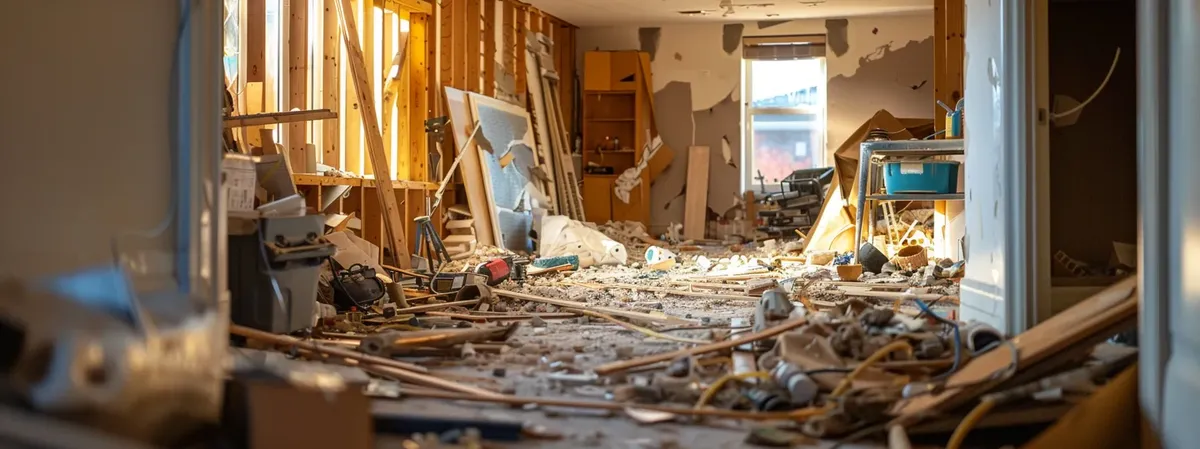Mold is more than just an unsightly patch on your walls or ceilings—it’s a sign of deeper issues in your home that can threaten both your property and health. If you’ve ever discovered a persistent, musty odor or noticed discolored patches growing in damp corners, you may already be dealing with a mold problem. Left untreated, mold can lead to structural damage and respiratory issues, especially for those with allergies or weakened immune systems. That’s where mold restoration comes into play.
Mold restoration refers to the professional process of removing mold and restoring the affected area to a safe, clean, and livable condition. It’s not just about cleaning up the visible mold; it involves identifying the source of moisture, properly remediating affected materials, and preventing future outbreaks. For homeowners, understanding this process is key to protecting their investment and their family’s well-being.
Understanding the Mold Restoration Process
Mold restoration is a multi-step process, often best handled by trained professionals due to the health risks and complexities involved. Here’s what you can typically expect:
1. Inspection and Assessment:
The first step in mold restoration is a thorough inspection. Professionals use moisture meters, infrared cameras, and sometimes even air quality tests to assess the extent of the damage. They identify the source of moisture that’s feeding the mold—whether it’s a leaky roof, poor ventilation, or a plumbing issue. Without resolving this root cause, mold will simply return.
2. Containment:
To prevent mold spores from spreading throughout the home during the cleanup, professionals isolate the affected area. This often involves sealing off rooms with plastic sheeting and using negative air pressure machines to trap spores.
3. Air Filtration:
High-efficiency particulate air (HEPA) filters are used to remove mold spores from the air. This step is critical in ensuring that airborne mold doesn’t travel to other areas of the house or remain behind to regrow.
4. Mold Removal:
Depending on the material, mold-infested items may be cleaned or completely removed. Porous materials like drywall, ceiling tiles, and carpeting are often unsalvageable and must be replaced. Non-porous materials like metal or glass can typically be cleaned and disinfected.
5. Cleaning and Sanitizing:
After removal, the area is thoroughly cleaned with antimicrobial and antifungal treatments to kill remaining mold and prevent future growth. In cases of severe infestations, professionals may also use fogging machines or ozone generators to sanitize the air and surfaces.
6. Restoration:
Once the mold is removed and the area sanitized, the final step is restoring your home to its original condition. This could be as simple as repainting walls or as involved as rebuilding entire sections of drywall or flooring. Some mold restoration companies offer full-service repairs, while others work with contractors to complete the job.
Why Mold Restoration Matters
While it might be tempting to tackle a mold problem with bleach and elbow grease, DIY approaches often fall short. Mold spores are tiny and can easily spread during cleaning. Without proper containment and removal, a surface-level cleaning might only mask the problem temporarily.
Moreover, mold often grows in hidden areas—behind walls, under floors, or inside HVAC systems—making professional inspection crucial. The risks of inadequate mold removal include recurring infestations, property damage, and serious health consequences. Children, elderly individuals, and those with respiratory conditions are particularly vulnerable to mold exposure.
A certified mold restoration company brings not only specialized equipment but also the expertise to identify subtle warning signs, eliminate mold at the source, and ensure the environment is safe moving forward.
Preventing Future Mold Problems
Restoration is just one part of the equation. Prevention is equally important, especially in homes prone to moisture issues. Here are a few proactive steps homeowners can take:
- Control Humidity: Keep indoor humidity levels below 60%, ideally between 30-50%. Use dehumidifiers in damp areas like basements.
- Ensure Proper Ventilation: Make sure your bathrooms, kitchens, and laundry rooms are well-ventilated. Use exhaust fans or open windows when possible.
- Fix Leaks Promptly: Whether it’s a dripping pipe or a leaky roof, water intrusion must be addressed immediately to prevent mold growth.
- Monitor for Condensation: Condensation on windows or walls is a sign of excess moisture. Insulate windows and walls if needed.
- Regular Inspections: Periodically check hidden areas like crawl spaces, attics, and behind appliances for signs of mold or moisture.
Conclusion
Mold restoration is more than just a cleanup job—it’s a comprehensive process that ensures your home is safe, structurally sound, and free from the harmful effects of mold. For homeowners, understanding how mold restoration works and recognizing when to call in professionals is crucial in preventing small issues from becoming expensive repairs or health hazards.
Whether you’re currently dealing with mold or simply want to be prepared, investing time and resources in proper mold restoration can save you stress, money, and potential health problems in the long run.






